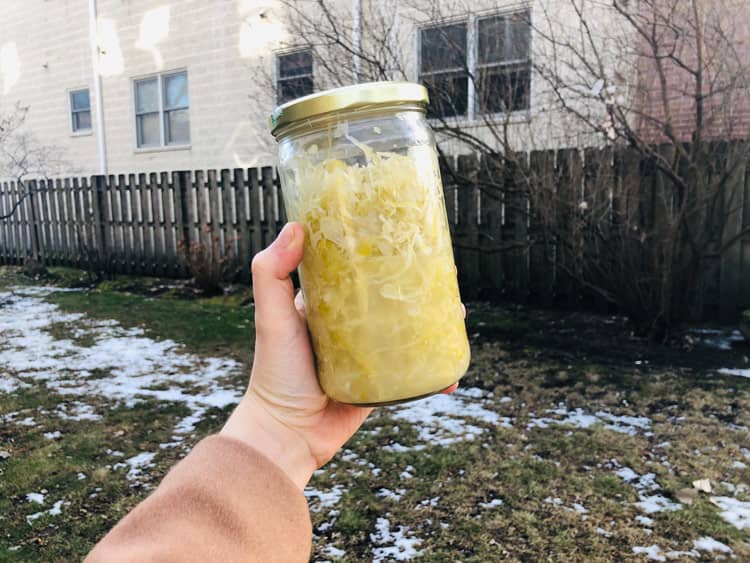
07 Jan Gut-Soothing Garlic Dill Sauerkraut
Sauerkraut has been a staple in the diets of people around the world for centuries. Before refrigerators and other modern preservation methods, people came up with different ways to preserve food, and fermentation was one of them. As a fermented food, sauerkraut contains live and active probiotics that act as your first line of defense against harmful bacteria and toxins that might enter your body. It is also high in digestive enzymes that help break down macronutrients so your body can actually absorb them. Sauerkraut also contains minerals like potassium, magnesium, and iron, which much of the US population is (severely) deficient in. Overall, sauerkraut is one of the healthiest foods you can put in your body, and also one of the most delicious.
Fun Fact: the name “sauerkraut” as we know it is German (sauer = sour; kraut = cabbage), but they did not invent it; it actually originated in China over two thousand years ago, where cabbage was preserved with rice wine in the winter to keep it fresh!
AND another fun fact, since these are so fascinating to me, in the 18th century explorers used sauerkraut to prevent scurvy during long sea voyages as it is incredibly rich in vitamin C; they would bring as much as 25,000 pounds on board long voyages! The more you know.
Garlic Dill Sauerkraut Recipe:
Ingredients:
- 1 head of cabbage
- 2 tsp caraway seeds
- 1 bunch dill
- 6 cloves chopped garlic
- 3 tsp sea salt
Method:
- Slice cabbage into thin strips (a mandolin works too)
- Mince the dill and garlic, a mortar and pestle works great
- Combine all the ingredients in a large bowl and pack it together. Find something heavy to push the ingredients down with, to draw out as much moisture as possible
- Pack the mixture into mason jars and using either plastic sandwich bags filled with water or some other heavy weight that fits inside the jar, ensure the mixture is packed down as much as possible.
- The fermentation only happens when the cabbage is fully submerged in liquid.
- Place the jars on a plate; they will gurgle and spill a bit over the next few days.
- Every day, “burp” the jars; open the lids to let the carbon dioxide escape.
- On day 3 or 4, taste the kraut. If that level of tanginess is good for you, then you’re done! You can also wait longer; some people wait as long as two months. I like mine after about 2 weeks.
Enjoy! I love sauerkraut with soft-boiled eggs and avocado for breakfast, in salads, on sandwiches or wraps, in a loaded sweet potato, on tacos, and straight from the jar!
